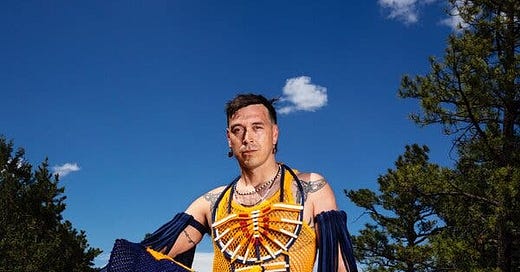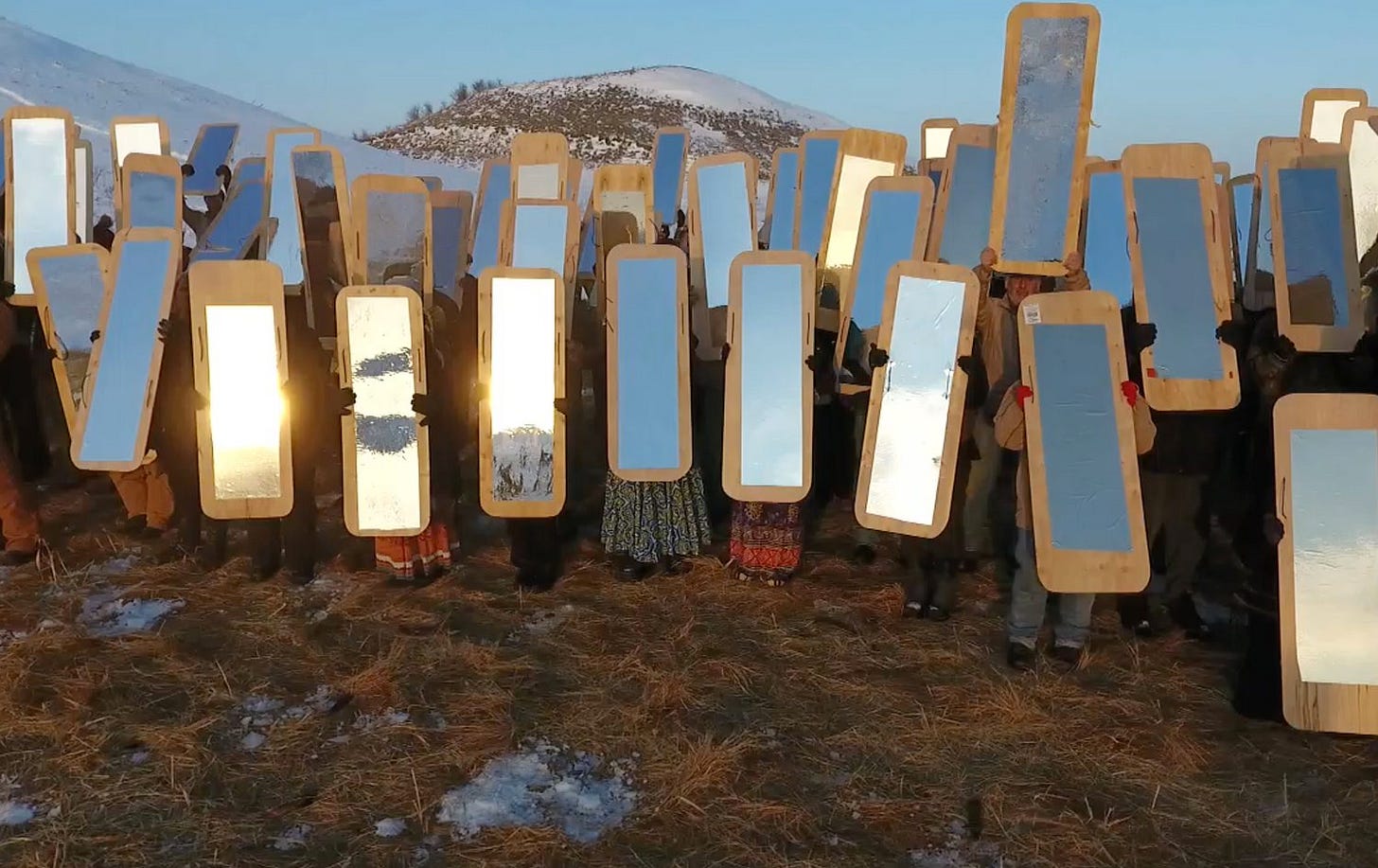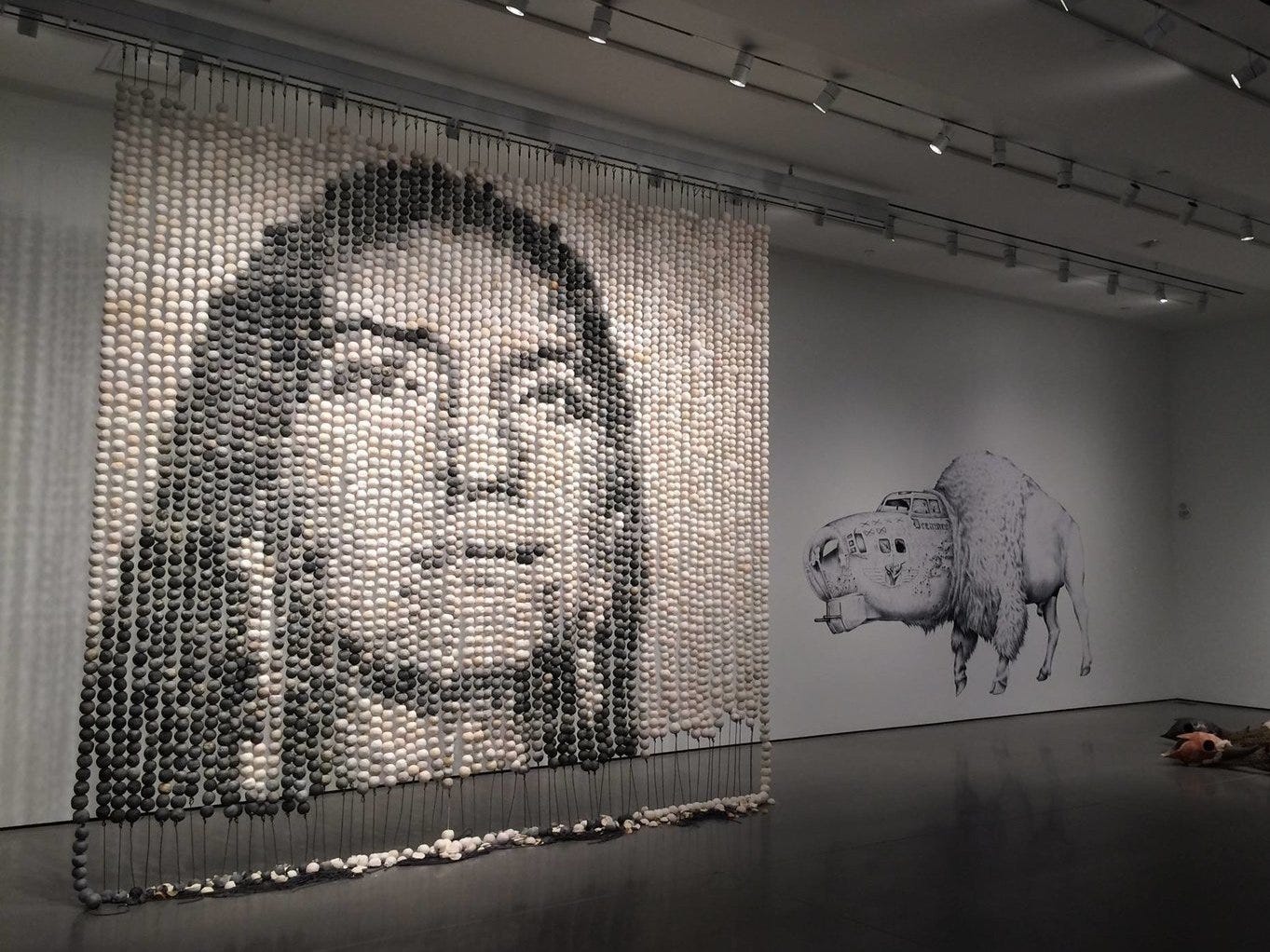Cannupa Hanska Luger’s artistry and activism have garnered significant attention, particularly for his ability to use art as a medium for social change. His heritage and experiences growing up on the Standing Rock Reservation inform his work, resulting in a distinct blend of Indigenous knowledge, contemporary art, and calls for social justice.
Luger’s Mandan, Hidatsa, Arikara, and Lakota roots play a critical role in shaping his perspective on art. Growing up in a community that values oral storytelling and traditional knowledge systems, Luger’s approach is rooted in collective memory and a desire to preserve Indigenous identity within a modern context. As documented by the Institute of American Indian Arts (IAIA) Museum of Contemporary Native Arts catalog (2020), Luger has stated that he sees his work as “a means of cultural continuity, a way to keep stories alive for future generations.”
Luger’s themes often intersect with pressing social issues, particularly those affecting Indigenous communities. His work critiques Western perspectives, often challenging stereotypes and presenting Indigenous identities as resilient and multifaceted.
One of Luger's main themes is the exploration of Indigenous identity, resilience, and the effects of colonial trauma. In an interview with Smithsonian Magazine (2018), he discussed the importance of portraying Indigenous communities in ways that resist victimization narratives, instead focusing on resilience. His pieces often engage with historical trauma while providing a path toward cultural empowerment.
Luger’s work consistently raises awareness about environmental issues, especially those impacting Native lands. As noted in the New York Times article “Art on the Front Lines” (2018), Luger believes that “the connection between the land and Indigenous people is inseparable,” and his work often critiques the environmental degradation caused by industries such as oil drilling. His Mirror Shield Project became a significant cultural symbol during the Dakota Access Pipeline protests, highlighting the connection between art and environmental justice.
Luger’s Mirror Shield Project was a response to the militarized police presence at Standing Rock, where he provided protestors with mirrored shields as a non-violent way to confront law enforcement. According to Smithsonian Magazine (2018), the shields “allowed protestors to reflect back the actions of the authorities,” embodying Indigenous resistance through art. This project garnered international attention and has since been replicated in other protests around the world.
This installation, comprising over 4,000 clay beads, pays homage to Missing and Murdered Indigenous Women, Girls, and Two-Spirit People (MMIWG2S). As detailed in ArtNews (2019), Luger created the piece to confront viewers with the magnitude of the crisis and encourage dialogue on violence against Indigenous women. The IAIA Museum of Contemporary Native Arts catalog describes Every One as a “collaborative piece that draws attention to a crisis that is often overlooked,” highlighting the power of collective art in community healing.

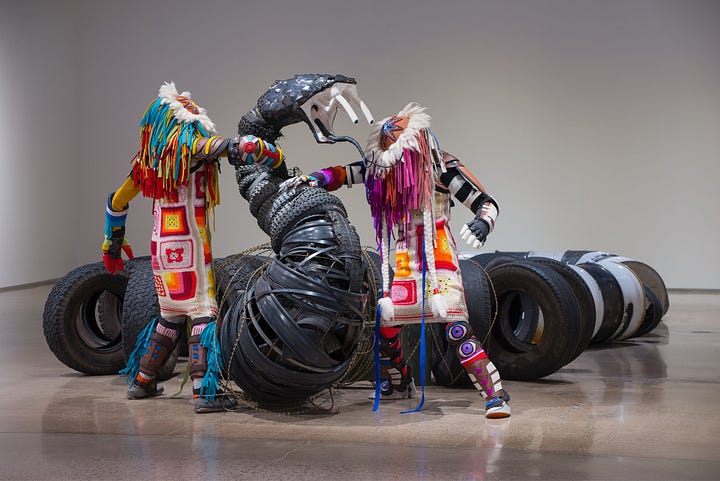
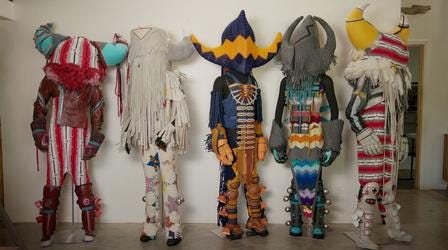

In Future Ancestral Technologies, Luger explores speculative futures based on Indigenous knowledge systems. This series incorporates performance and immersive installations to imagine a world where Indigenous philosophies guide ecological and technological advances. According to the Institute of American Indian Arts (IAIA) catalog, this work reflects Luger's vision for a future that moves beyond colonial frameworks, suggesting that Indigenous perspectives could lead to more sustainable approaches.
Luger’s work has a significant impact not only in the art world but also in Indigenous and environmental activism. He has received various awards, including the Joan Mitchell Foundation Painters and Sculptors Grant, further establishing his importance as an Indigenous artist. Art historian Nancy Mithlo notes in her essay in Smithsonian Magazine (2018) that Luger’s work “amplifies the voices of Native communities, often underrepresented in mainstream art.” His work is also frequently cited in discussions of Indigenous Futurism, a movement that imagines Indigenous-led visions of the future.
Cannupa Hanska Luger’s body of work serves as a bridge between art and activism, using visual storytelling to highlight issues faced by Indigenous communities. From the Mirror Shield Project to Every One, his pieces are testaments to Indigenous resilience and have inspired viewers to consider the potential of art to drive social change. His commitment to environmental justice and cultural preservation solidifies his role as a key figure in contemporary Indigenous art. Through his work, Luger continues to inspire dialogue, challenging audiences to see the world through an Indigenous lens.
References
ArtNews. "Cannupa Hanska Luger on Using Art to Address Violence Against Indigenous Communities." ArtNews, 2019.
Smithsonian Magazine. "How Cannupa Hanska Luger Is Turning Art into Activism at Standing Rock." Smithsonian Magazine, 2018.
Institute of American Indian Arts (IAIA) Museum of Contemporary Native Arts. Indigenous Futurism: The Art of Cannupa Hanska Luger, exhibition catalog, 2020.
New York Times. “Art on the Front Lines.” New York Times, 2018.

